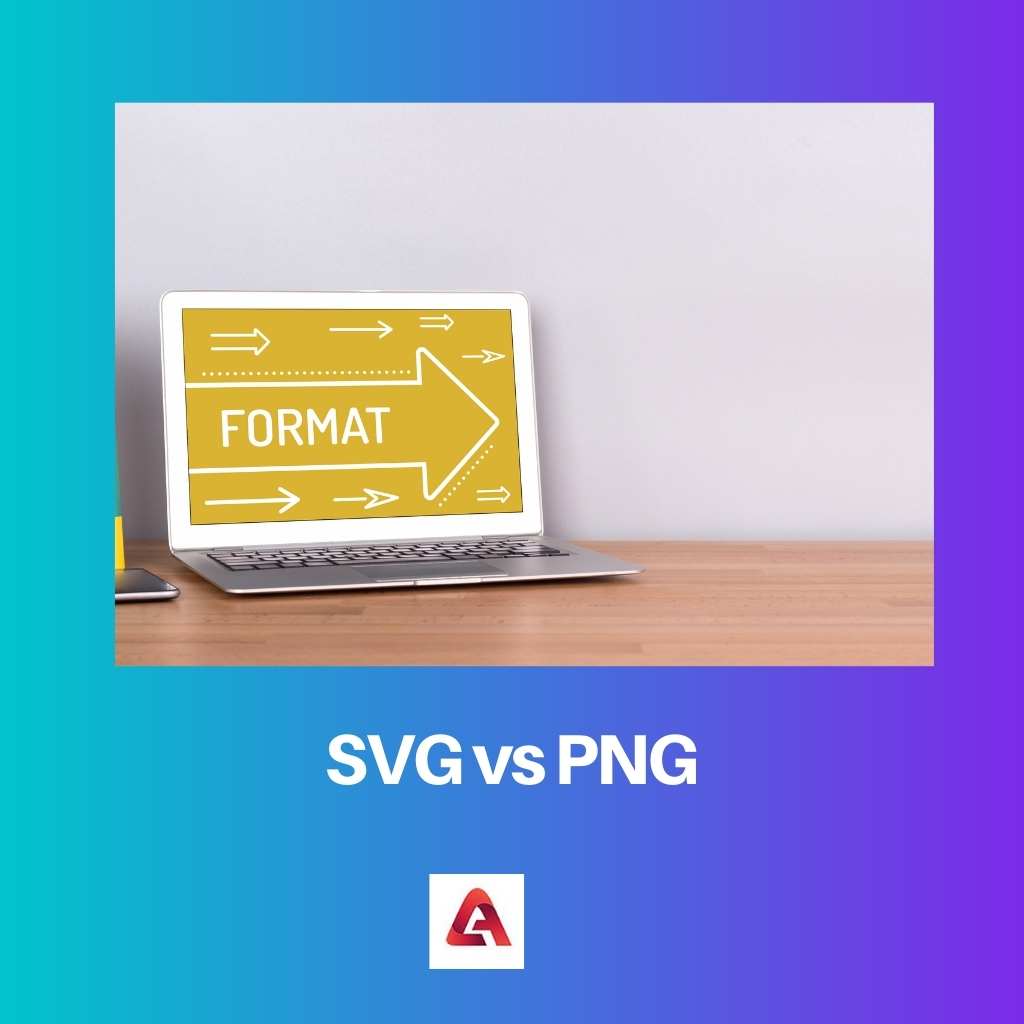Consider saving someone’s files as SVG or PNG if they are dealing with high-quality graphics and digital logos. Both codecs are adaptable and have good densities, even when used on a broader scale.
Here are the key distinctions between SVG and PNG, and also how to use each. SVG stands for Scalable Vector Graphics. And PNG is the abbreviation acronym for Portable Network Graphics.
Key Takeaways
- SVG (Scalable Vector Graphics) uses vector-based graphics, which can be resized without losing quality, while PNG (Portable Network Graphics) utilizes raster-based graphics, which can become pixelated when enlarged.
- SVG files support transparency and are smaller in size than PNG files.
- PNG files are better suited for photographs and complex images, whereas SVG is ideal for logos, icons, and simple illustrations.
SVG vs PNG
The difference between SVG and PNG is that SVG pictures are based on vector quantities. The quality of the SVG images does not degrade as they are zoomed in. However, the image quality does not change with zooming. Whereas PNG images are based on pixels. When you zoom in on PNG images, the quality of the photos does not stay the same; rather, it deteriorates and worsens.

The abbreviated form of Scalable Vector Graphics is SVG. Scalable Vector Graphics pictures are composed of shapes and paths. There is an ability to edit and modify SVG images.
SVG (Scalable Vector Graphics) pictures are used in devices that require high-resolution images. The extension. SVG is used for SVG images.
PNG stands for Portable Network Graphics. Pixels are responsible for the structural design of Portable Network Graphics images. There are no options for editing or modifying PNG pictures.
The generation of images is defined as the use of Portable Network Graphics images. PNG pictures have the.png extension.
Comparison Table
| Parameters of Comparison | SVG | PNG |
|---|---|---|
| Full form | Scalable Vector Graphics | Portable Network Graphics |
| Editing and modification | Option available | Option not available |
| Extension | .svg | .png |
| On zooming | Images Quality remains the same | Quality deteriorates |
| Quality of images | Based on vector | Based on pixels |
| Manufactured of | Shapes and paths | Pixels |
| Usage | Devices using high-resolution images | Image creation |
What is SVG?
SVGs (Scalable Vector Graphics) are ideal for trademarks and graphic elements since they can be scaled down or up for various uses.
Because companies such as Google can understand their XML computer language, they’re also a common choice in site design. This aids in the positioning and SEO of a website.
SVGs and PNGs, on the other hand, are vector-based.
This implies the collection of evidence using analytical models, which you can subsequently expand at any height without losing quality.
Scalable Vector Graphics pictures are composed of forms and paths. When it comes to SVG images, there is the possibility to edit and modify the images.
The use of SVG (Scalable Vector Graphics) pictures is defined by its application in devices that require high-resolution images. The extension. SVG is used for images related to SVG.
SVG (Scalable Vector Graphics) is the shortened form of Scalable Vector Graphics. In the case of SVG, the images are based on vector quantities.
The quality of the SVG images does not diminish as they are zoomed in. However, the visual quality remains the same when zoomed in.
What is PNG?
Portable Network Graphics or PNG files are vector images. High sensitivities, lossless reduction, transparency, and the ability to manage 16 million colors are all features of these devices.
As a result, they’re ideal for infographics, branding, diagrams, and drawings, as well as extremely detailed images. PNG images aren’t the best choice for internet photos because of their enormous file sizes.
Pixels are the structural manufacturers of Portable Network Graphics pictures. In the case of PNG images, there are no such choices for altering or modifying the images.
The generation of images is distinguished by the use of Portable Network Graphics images. The extension.png is connected with PNG pictures.
The shortened form of Portable Network Graphics is PNG. In the case of PNG, the images are based on pixels.
When you zoom in on PNG images, the quality of the photos does not stay the same; instead, it deteriorates and worsens.
Main Differences Between SVG and PNG
- Scalable Vector Graphics is popularly known by its abbreviated form, SVG. On the other hand, Portable Network Graphics is known by its abbreviated form, PNG.
- The images in the case of SVG are based on vector quantities. On the other hand, the images in the case of PNG are based on pixels.
- When the SVG images are zoomed in, the quality of the images does not deteriorate. However, on zooming also, the quality of images remains the same. On the other hand, when the PNG images are zoomed in, the quality of the images does not remain the same rather it deteriorates and degrades.
- The images of Scalable Vector Graphics are made up of shapes and paths. On the other hand, the images of Portable Network Graphics are structurally manufactured by Pixels.
- In the case of SVG images, there is an option available to edit and modify the images. On the other hand, in the case of PNG images, there are no such options available in which the editing or modifications of the images can be done.
- SVG or Scalable Vector Graphics images, their usage is characterized by their use in those devices which makes use of high-resolution images. On the other hand, the usage of the images of the Portable Network Graphics is characterized as the creation of images.
- The images associated with SVG use the extension .svg. On the other hand, the images associated with PNG use the extension .png.

- https://pdfs.semanticscholar.org/90b4/afbc3f67b3df88534c820dbdf5d092c33873.pdf
- https://bmcgenomics.biomedcentral.com/articles/10.1186/1471-2164-9-488
